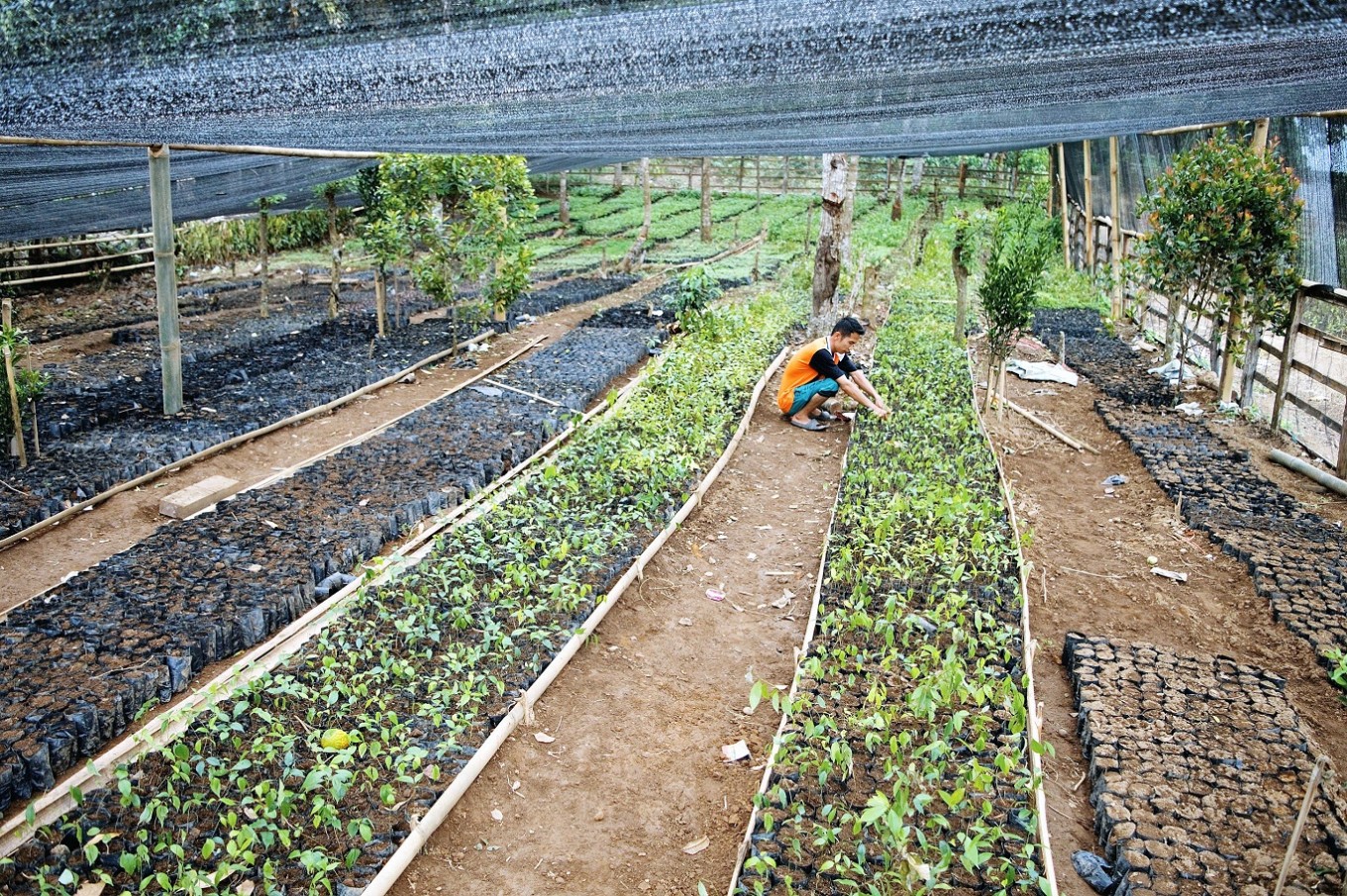Guarding the forest
What goes around comes around in the forests of Mount Kerinci, Jambi, where local communities play a big role in preserving the environment.
Change Size
 Budding prospects: A man works at a nursery in Pengasi Baru village in Jambi. (JP/Syafrizaldi)
Budding prospects: A man works at a nursery in Pengasi Baru village in Jambi. (JP/Syafrizaldi)
L
ush green pine trees adorn hilltops that encircle a vast natural bowl where a major water channel, known as the Batang Merao River, flows down the middle. This river accumulates water that runs down the hills that are part of the communal forests being conserved through local initiatives in Kerinci regency, Jambi.
Lansim, a community figure, and his group were preparing a three-hour trek to map one of the communal forests, Bukit Gedang, in Pendung Hilir village, Air Hangat district, Kerinci.
“Our forest lies behind the hill over there,” said Lansim, pointing at a distant dark blue hill. The group accompanying him comprised middle-aged village personnel in charge of communal forest maintenance and conservation activists.
Bukit Gedang, covering an area of 133 hectares, is next to the Kerinci Seblat National Park and is receiving growing attention from local people.
“We need ever-flowing water for our fields and farms. Unless properly conserved, the forest will provide no water for our crops and families,” Lansim indicated.
Despite being small in size, local communities near the Bukit Gedang forest have been asking the local government to grant them the rights to conserve the forest and make a positive impact on the life of locals together with the village administration.
“The regency’s administrative process wasn’t smooth, so our communal forest hasn’t yet been officially acknowledged,” he lamented.
(Read also: After the customary forest recognition)

The former head of the communal forest section, Neneng Susanti, confirmed the administrative constraints on the recognition of Bukit Gedang’s community management. She said the Kerinci regent’s replacement in 2013 had improperly handled the proposal for the forest. “It was mainly due to regency personnel substitutions and changes in their administrative ranks,” noted Neneng.
At least 12 self-managed communal forests were announced in various districts by the Kerinci regent until 2015. On Dec. 30, 2016, President Joko “Jokowi” Widodo issued a decree recognizing the forest management rights of nine traditional communities over 13,100 hectares, including those in Kerinci regency.
A field coordinator of Walestra, a forest conservation and advocacy foundation, Jefri Nurrahman, who was also involved in the mapping, said local forest conservation initiatives through community-based management should be appreciated.
“Such management is characterized by the direct involvement of local people. Any institution locally set up is run by the community concerned, with its rules made and approved by community members on the basis of the local wisdom they have long shared,” Jefri pointed out.
“Our foundation is part of the consortium supporting community-based forest management, Wanakita, which assists local people in at least three regencies in West Sumatra and Jambi,” said Jefri.
(Read also: The birth of a new living organism: Indonesia's first Earthship)

Mount Kerinci soars in the north as Sumatra’s highest summit. Lake Kerinci glows in the southeast with the Batang Merao River flowing through the middle.
A village customary chief, Lasardin, said Bukit Gedang had been locally managed for generations. Kerinci’s forebears were knowledgeable about maintaining the forest without creating disasters.
“What’s frequently overlooked is the process of rehabilitating after natural resources are exploited. Things are just often taken for granted. Forests should be maintained and replanted, the soil should be allowed time to rest and water should be preserved so as not to disturb its regular cycle,” explained Lasardin.
Samsudin, another customary village chief, voiced the same concern. He referred to the necessity for the forest safeguarding authority to be held by a depati (a traditional community chief), with subordinates in charge of management duties reporting periodically to the chief.

Nonetheless, Samsudin said he isn’t worried, as he and his community members have for years been taking care of the forest in the district. High on a hill, their forest has been well conserved to provide water even for the villages located close to Lake Kerinci.
Communal forests’ utilization zones provide non-wood forest products and environmental services, while their protected zones are meant for the preservation of water sources, prevention of erosion and conservation of wildlife species.
Under the communal forest management in Mount Kerinci, the local communities do not only manage the utilization of forest products by nearby residents, but they also serve as conservationists to safeguard the environment.
“What we’re doing now is part of the effort to promote community welfare and environmental conservation,” added Lansim.









